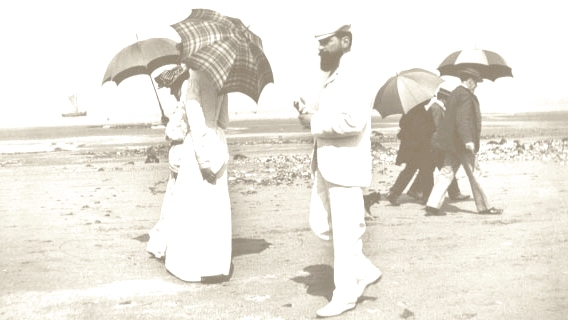William Soutar, the Perth poet
He was educated at Perth Academy.-“That was my eighteenth year while yet the shadow of war was unacknowledged. Then I was one of the fleetest at the Academy; one of the strongest; first in my year at most things; I was writing poetry; I was in love; I was popular both in the classroom and the playing field. I never reached this condition of living fullness again except in brief moments.”This was written in 1937 when he was already permanently confined to bed.
He remembered local worthies too:
Kirsty Hogg of Dunkeld, “byord’nar fond of kale” ; Teenie Dot of Madderty; Meg Murtrie from Methven with nine children, “wha lauch’t at a’ mishanter” , or Jonathan Maconachie, “the beadle o’ Kinclaven” and many more.Whan Gowdan are the Carse-landsBraw are the Grampian Mountains
Whan simmer licht is still;
And gowdan are the Carse-lands
Ablow the Corsie Hill.
Yonder the gowdan steeple
Spires up frae the auld toun,
And the brig wides through the water
Owre far awa for soun’.
ScotlandSauls that are stark and nesh:
Sauls that wud dree the day:
Sauls that are fain for flesh
But canna win the wey.
Hae ye the unco sicht
That sees atween and atween
This world that lowes in licht:
Yon world that hasna been?
It is owre late for fear,
Owre early for disclaim;
Whan ye come hameless here
And ken ye are at hame.
-
... a dowager Countess of Strathmore who entered into a second ill-fated marriage. The account of her bitter experience impelled Thackeray to write his romance of sordid life entitled Barry Lyndon.Electric Scotland
In some editions of that romance, a note by the author explains its foundation in history. The unhappy woman wrote about her wretched experience, the letter being described as the most damning indictment of a husband ever written by a wife.
[...]
Even in the last decade of Queen Victoria’s reign many Carse folk did not care to pass the Bogle Brig at night.
-
In the 16th century, Janet Douglas married the Sixth Lord of Glamis. When he died she was left unprotected and exposed to the full wrath of James V who had a deep and vicious hatred of all the Douglas clan. Determined to get his hands on Glamis Castle and avenge himself on his hated enemy, James accused Lady Janet of witchcraft. She and her son were imprisoned in Edinburgh Castle’s dark and dank dungeons.Glamis Castle
Nobody believed that Janet was a witch, being beautiful and kind.
...James ordered her to be punished nonetheless.
Janet was tortured, her servants were put on the rack and stretched and her young 16-year-old son, the heir to Glamis, was made to watch his mother’s agony, before experiencing it all for himself first-hand. In the end, they confessed.
Lady Janet was convicted and on 17 July, 1537, she was burned alive.
When James V died, Lady Janet’s son was released and parliament restored Glamis to him.
Diane Maclean/Scotsman 21.Jan.05
-
bonus link:
The Monster of Glamis
"Wentworth-Day describes a tale whereby a workman carrying out renovation at Glamis in the early 1900s found the secret passage, and explored it, and became "alarmed" at what he found there. The Earl and his lawyer were summoned from London, and they stopped the work and interrogated the man. The result of this was that he was bribed into silence and emigration (to Australia) with several hundred thousand pounds of hush money."



